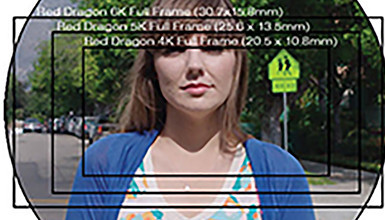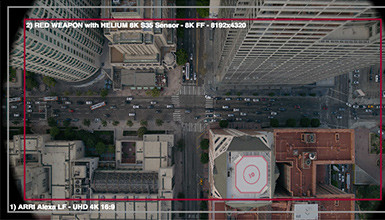EDITOR'S NOTE: This blog is about AbelCine's original FOV tool. A new version, AbelCine FOV Tool 2.0, which includes the latest cameras and lenses, is now available.
A cinematographer may know what image they will get with a 35mm lens on a 2/3" HD Camera but on the next job decides to use Super 35mm and is left wondering what lens to use to get the same look. We created this Field of View Comparator to take the guesswork out of lens selection -- we did the math for you and have also included sensor size overlay, crop view and angle of view, just for fun.
First let's define a few terms:
Sensor Size
Numerous cameras available today feature a "35mm-sized sensor." How is this defined? They all vary slightly in size, and some are shaped differently so that, when used for HD shooting, the usable size is dramatically reduced. Our clients frequently ask how to compare these different cameras and how sensor size affects field of view and lens coverage. On this topic, words and numbers can be difficult to interpret, so Abel Cine Tech decided to produce a graphical chart to better compare areas of coverage.
Focal Length
The focal length of a lens is defined as the distance from the optical center of a lens (or the secondary principal point for a complex lens like a camera lens) to the focal point (sensor) when the lens is focused on an object at infinity. It's a primary physical characteristic of a lens, which can be measured in an optical lab. It remains the same no matter what camera the lens is mounted on. A 10mm focal length lens is always a 10mm focal length lens, and a 200mm focal length lens is always a 200mm focal length lens.
Field of View
The field of view of a lens (sometimes called the angle of coverage or angle of view) is defined as the angle (in object space) over which objects are recorded on the film or sensor in a camera. It depends on two factors, the focal length of the lens (see above) and the physical size of the film or sensor. Since it depends on the film/sensor size, it's not a fixed characteristic of a lens, and it can only be stated if the size of the film or sensor it will be used with is known. For a lens used to form a rectangular frame, three fields of view are often given: the horizontal FOV, the vertical FOV and the diagonal FOV.
Now on to the fun part, click on the image above to go to our Field of View Comparator.


















